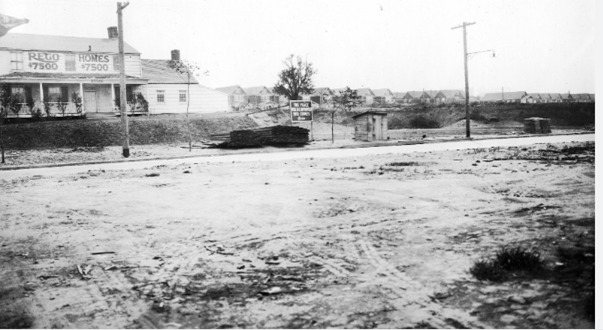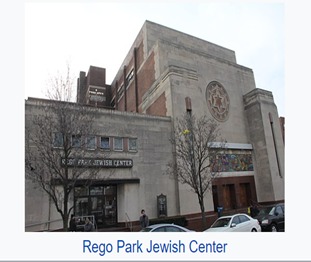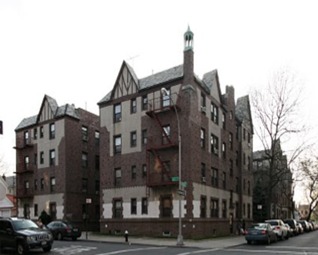HISTORY OF REGO PARK
 We are proud to be part of Rego Park – a place full of rich history and a wonderful place to live. Did you know?
We are proud to be part of Rego Park – a place full of rich history and a wonderful place to live. Did you know?
Back in 1923, the Rego Construction Company, also known as the Real Good Construction Company, acquired land in Forest Hills West and named “Rego Park” after their advertising slogan, “Real Good Homes.”
The first developments included 525 8-room Colonial houses bordering 63rd Drive and Elliot Avenue, followed by elaborate apartment houses on Saunders street in the late 1920s, which continued through the 1940s on Saunders Street and Queens Blvd. A large quantity of the original homes stand today in relatively unaltered state, and the apartment houses remain mostly intact. The first street was Remsen Avenue (now 63rd Drive), named after the Ramsen family,  who had owned a large parcel of farmland in Rego Park.
who had owned a large parcel of farmland in Rego Park.
Some notable sites that are reflective of Rego Park historic fabric include Public School 139 on 63rd Drive, which was filed with the Department of Buildings in 1928; the Lutheran Church of Our Saviour that opened its first formal home in 1931 on 63rd Drive; the Rego Park Jewish Center on Queens Boulevard with a cornerstone that reads 1948 (Placed on the State & National Register of Historic Places in October 2009), and the Lost Battalion Hall on the north side of Queens Boulevard between 63rd Drive & Horace Harding. In the late 1930s and throughout the 1940s, classic Art Deco shops were erected on Queens Boulevard and along 63rd Drive, and some were considered showrooms for goods, with customers appreciative of their mom & pop status and revolutionary architectural touches.
The Remo Hall, erected 1927 is the earliest apartment house in Rego Park on Saunders Street. It is a Tudor  architectural style alongside neighboring buildings that exhibit a smorgasbord of styles in our neighborhood, including Georgian Colonial, Art Deco, Moorish and Medieval. Other historic apartment houses include Marion Court, Jupiter Court, Savoy Gardens, Elizabeth & Victoria complex, the Oxford and Cambridge complex, and the Saunders Gardens complex, which were all developed from the late 1920s through early 1940s. Many apartment houses are symbolic of Ebenezer Howard’s Garden City Movement, since they grant a sense of place by reserving space for landscaping and breathing space by not developing the land in its entirety, have recessed building wings, feature courtyards, are low-rise in scale, feature roof gardens for residents to associate and keep cool during the summer months, and most incorporate traditional English architectural touches. Even though the Saunders Gardens complex is a later addition with Art Deco touches, it features recessed areas and traditional roof garden, along the lines of Marion Court, and was developed around the central theme of a park.
architectural style alongside neighboring buildings that exhibit a smorgasbord of styles in our neighborhood, including Georgian Colonial, Art Deco, Moorish and Medieval. Other historic apartment houses include Marion Court, Jupiter Court, Savoy Gardens, Elizabeth & Victoria complex, the Oxford and Cambridge complex, and the Saunders Gardens complex, which were all developed from the late 1920s through early 1940s. Many apartment houses are symbolic of Ebenezer Howard’s Garden City Movement, since they grant a sense of place by reserving space for landscaping and breathing space by not developing the land in its entirety, have recessed building wings, feature courtyards, are low-rise in scale, feature roof gardens for residents to associate and keep cool during the summer months, and most incorporate traditional English architectural touches. Even though the Saunders Gardens complex is a later addition with Art Deco touches, it features recessed areas and traditional roof garden, along the lines of Marion Court, and was developed around the central theme of a park.
1 The contents were researched by and written by members of the Rego-Forest Preservation

